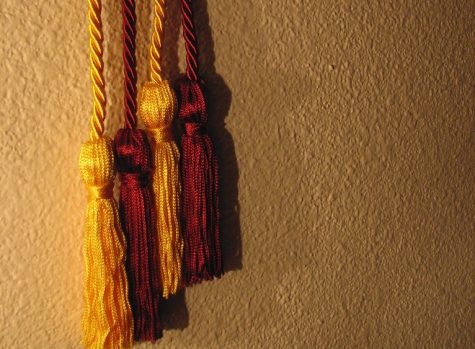One Year Later: The New Schedule
This school year, we adopted a new schedule. One year out, administrators are reflecting on the successes and failures of the schedule and how to work out the kinks.
“I think we had a lot of successes this school year with the new schedule, but we know that there were some challenges and we are working on creative ways to solve those challenges,” Matt Peer said.
Peer believes that one of the major successes of this year’s schedule is that “community time” is during the middle of the day.
“Our community time, our time that begins at 9:10, that having that in the middle of the day made it more significant and more important. We had better chapel programs, better assemblies and certainly more meaningful advisory time this school year. It was hard in our old schedule when it was at the end of the day and students had athletics and away games. It didn’t really feel like an Upper School community with so many people missing that community time,” Peer said.
Also, having Office Hours in the middle of the day has increased attendance from students, allowing students to get all the help they need.
“I think the Office Hours or coach class attendance and what the students got out of that time is much better in the school day. In our old schedule with the 15 minutes each morning before school didn’t really give students the opportunity to get the help they needed from multiple teachers,” Peer said.
Though the new schedule has had many successes, there have also been challenges. For example, many teachers struggled over how to properly test students with less class time.
“I think that for all of our faculty members who were teaching in the longer blocks for the first time that they did an outstanding job at taking advantage of 70 minute classes that meet every other day. I think what the faculty are really going to focus on this summer is the nature and types of assessments they give. In the old schedule, you may have 10 quizzes and six tests in a semester with other labs and homework assignments, but when there is only 40 class meetings in a semester, you aren’y going to have 50% of the time dedicated to tests and quizzes. This is one area we have been working on during faculty meetings and will continue to work on over the summer,” Peer said.
Both students and teachers have complained about having less time in class, especially in the science department where class time has been shortened more significantly.
“We are working with the Science Department Chair. One of the things we would hate to do is to take Iperiod. We are trying to work it into the rotation so that once every eight days, there is an opportunity for that [extra lab science period]. We will not go back to double period sciences,” Peer said.
This year, feedback over the allotted lunch time has been varied.
“Ninth and tenth graders for the most part thought that lunch was just enough time, while eleventh and twelfth graders said it wasn’t enough time. Day students said it was nowhere near enough time and residential students said it was plenty of time,” Peer said.
However, administration is looking for solutions to these problems.
“We are working on a way to facilitate a better service to make sure students get the food that they want, that students that have a free period have access to the dining hall before lunch. The other thing that we are looking at is that this year, we had eleventh and twelfth grade classes go to lunch first, then class, and then students ninth and tenth grade classes went to class then got lunch. We are going to wait until we are done with all the schedules and see mathematically how we can make it an equal divide,” Peer said.
Overall, Peer thinks the schedule has been effective, especially in reducing the stress-levels of students.
“I think with the longer classes that are meeting less frequently, kids are able to get sleep and getting sleep is extremely important,” Peer said. “I think we have reduced the amount of work being done outside of the classroom each night.”
Check out how people felt at the beginning of the year.











